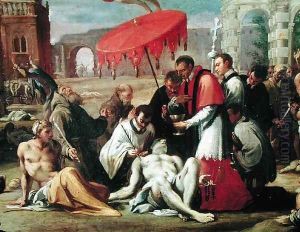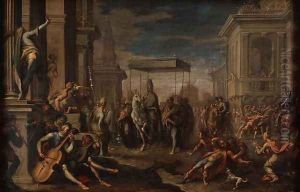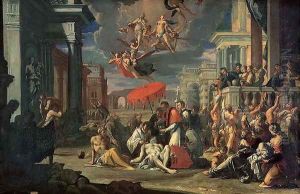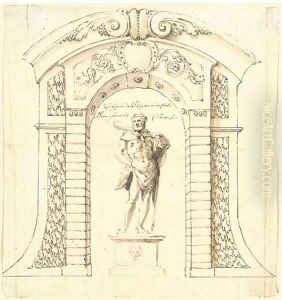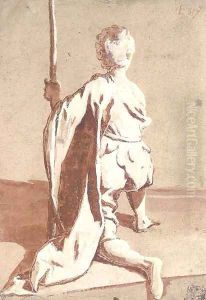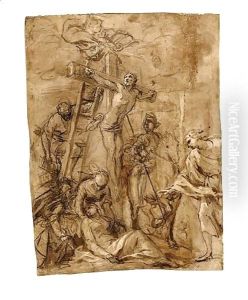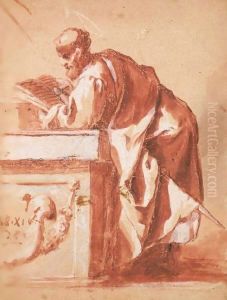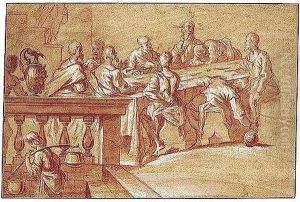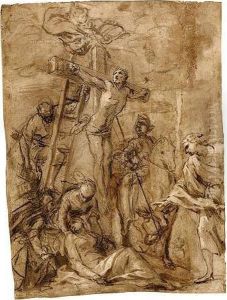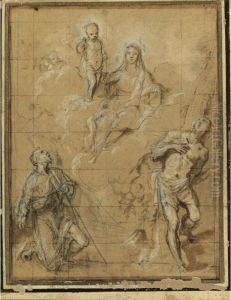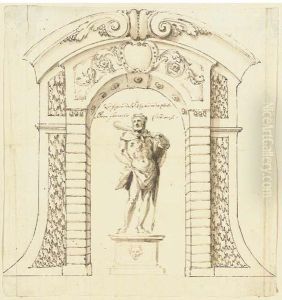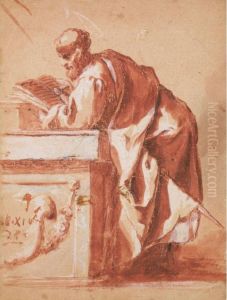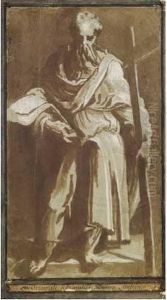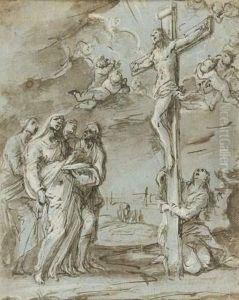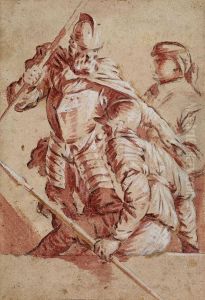Sigismondo Caula Paintings
Sigismondo Caula was an Italian painter born in Modena in 1637. He was part of the Baroque movement, which was known for its exuberance and grandeur in the arts. Caula's early life and training are not extensively documented, but it is known that he was active in the art scene of Modena and later influenced by the Roman and Bolognese schools of painting. His works are characterized by their vibrant colors, intense emotional expressions, and detailed depictions of both religious and mythological themes.
Caula's career took a significant turn when he became a pupil of Jean Boulanger, an esteemed French painter who had a considerable impact on his style and technique. Under Boulanger's mentorship, Caula honed his skills in creating dynamic compositions and mastering the play of light and shadow, which would become hallmarks of his work. He was deeply influenced by the works of the Carracci family and Guercino, incorporating their approach to naturalism and dramatic effect into his paintings.
Throughout his lifetime, Caula received numerous commissions from churches and noble families in Modena and surrounding areas, contributing to his reputation as a prominent figure in the Italian Baroque movement. His religious paintings, in particular, were celebrated for their ability to convey deep spirituality and devotion, making them highly sought after for decorative purposes in sacred spaces.
Despite his success, detailed records of Caula's life remain scarce, and many of his works have been attributed to other artists of the era, leading to some ambiguity regarding his oeuvre. Nevertheless, his contribution to the Baroque period is undeniable, with surviving works that continue to be admired for their beauty and emotional depth.
Sigismondo Caula passed away in 1724, leaving behind a legacy that, while somewhat overshadowed by his contemporaries, remains an important part of the history of Italian art. His paintings reside in various collections and churches, serving as a testament to his skill and artistic vision. Through his work, Caula has secured his place in the annals of art history as a significant, though underappreciated, master of the Baroque era.
